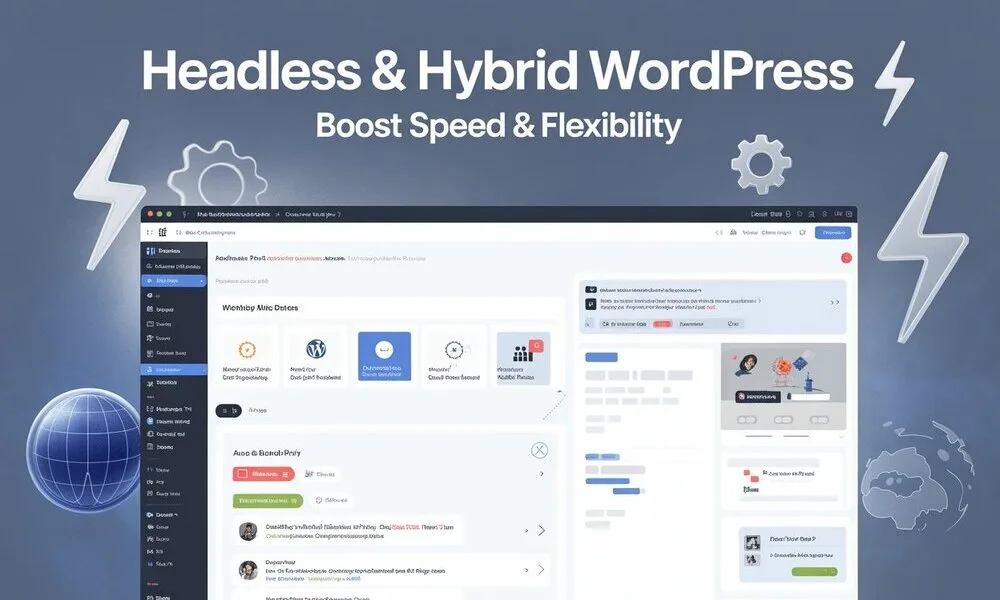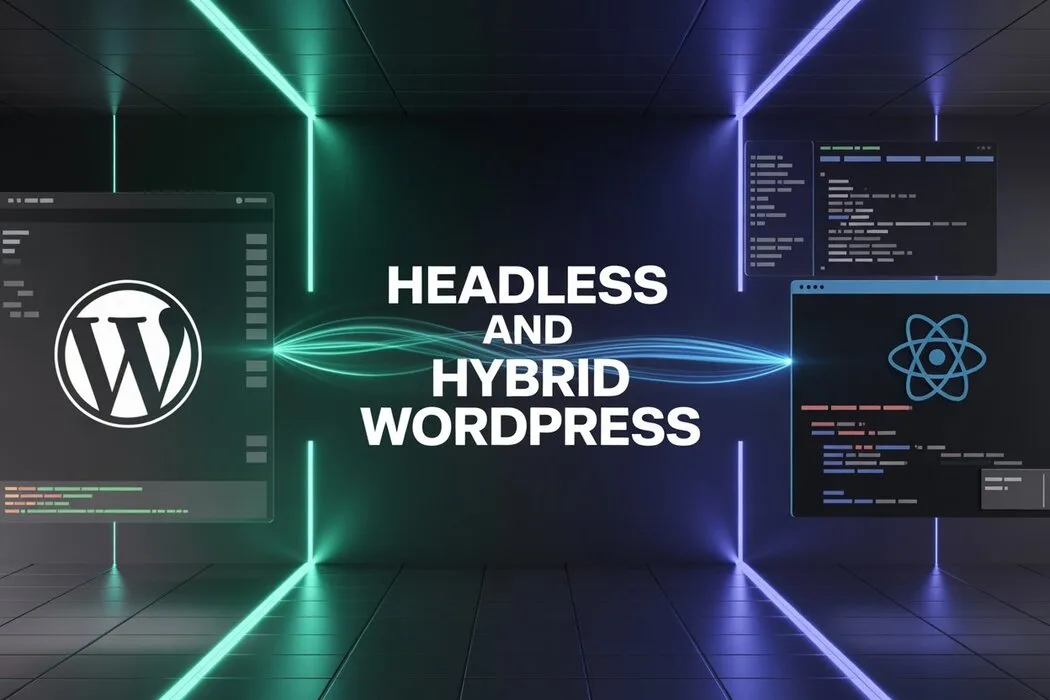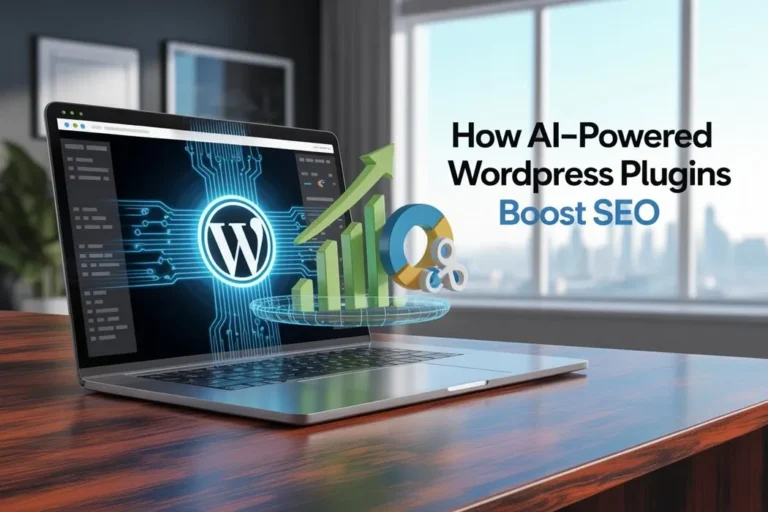Headless and Hybrid WordPress for Better Performance
Hey there, WordPress fans! In 2025, websites need to be fast, flexible, and easy to use. That’s why I’m excited about Headless and Hybrid WordPress. These approaches are like a breath of fresh air for web development. They make your site zippy, adaptable, and loved by Google. Whether you’re running a blog, an online store, or a portfolio, these methods can take your project to the next level. So, grab a coffee, and let’s dive into why these are game-changers!
What is Headless WordPress?
Picture this: WordPress handles your content, but the front-end? That’s a whole different story. Headless WordPress splits the back-end (where you create posts) from the front-end (what users see). Instead, frameworks like React or Vue.js display your content. Consequently, this setup makes sites faster and more versatile. Here’s why I love it:
- Super Speedy: Pages load in a snap, keeping visitors happy.
- Goes Everywhere: Your content can appear on websites, apps, or even smartwatches.
- Safer Sites: Hackers have a tougher time since the back-end is less exposed.
For example, I once helped a friend’s e-commerce site go headless. Their customers loved the lightning-fast checkout. Plus, the WordPress REST API made it easy to connect everything. As a result, Headless WordPress is perfect for anyone craving speed and flexibility.
Why I’m Sold on Headless
Headless WordPress is a dream for tech-savvy folks. For instance, developers can build sleek, modern interfaces. However, it’s not just for coders. Businesses with blogs or shops can benefit too. Sure, it takes some setup, but the results? Totally worth it.
Understanding Hybrid WordPress Architectures
Now, let’s talk about Hybrid WordPress. It’s like the best of both worlds. You keep WordPress’s familiar dashboard for content, but add modern frameworks for dynamic parts. Consequently, it’s perfect for those who want simplicity and pizzazz. Here’s what makes it shine:
- Easy for Everyone: Your team can update content without coding.
- Fancy Features: Add cool stuff like interactive quizzes or live feeds.
- Balanced Approach: Mix traditional WordPress with cutting-edge tech.
For example, I worked on a travel blog that used WordPress for articles but React for a booking widget. Visitors loved it! Moreover, hybrid setups keep things user-friendly while adding modern flair. As a result, they’re ideal for diverse projects.
When to Go Hybrid
Hybrid WordPress is great when you need flexibility but love WordPress’s ease. For instance, small businesses often want simple content updates but need dynamic tools. Additionally, it’s a middle ground between traditional and headless. Thus, it’s a win for teams wanting both.
Why Headless and Hybrid WordPress Boost Performance

Speed is everything today. Nobody waits for a slow site—not me, not you, not Google. Fortunately, Headless and Hybrid WordPress deliver. Specifically, they align with Google’s Core Web Vitals, like fast loading (LCP) and smooth interactions (FID). Here’s how they make sites fly:
- Static Pages: Pre-built pages load instantly, no waiting.
- Less Server Stress: APIs deliver content without overloading servers.
- Ready for Growth: Handle tons of visitors without crashing.
For example, a news site I follow switched to headless and cut load times by half. Their readers stayed longer, boosting engagement. Similarly, hybrid setups help shops handle holiday traffic spikes. Consequently, these methods keep your site fast and reliable in 2025.
Real-Life Speed Wins
I saw a media company transform with Headless WordPress. Their old site lagged, losing readers. After going headless, pages loaded 40% faster. Moreover, their bounce rates dropped, and ad revenue grew. Hybrid sites also shine, letting retailers scale while keeping content simple.
SEO Benefits of Headless and Hybrid WordPress
SEO is your ticket to getting noticed. Thankfully, these architectures make Google happy. First, fast sites keep users engaged, which boosts rankings. Additionally, Headless and Hybrid WordPress offer SEO perks:
- Structured Data: APIs add JSON-LD, helping Google understand your content.
- Mobile Magic: Create app-like experiences for phone users.
- Global Reach: CDNs deliver content fast, no matter where users are.
For instance, a headless blog I helped ranked higher because it loaded in a flash. Plus, hybrid setups let you use SEO plugins like Yoast on traditional pages. As a result, these approaches are SEO gold for 2025.
My Favorite SEO Tricks
SEO tools make these setups even better. For example, I use Rank Math to add schema markup to headless sites. Additionally, Cloudflare’s CDN speeds up global delivery. Consequently, pairing these with Headless or Hybrid WordPress skyrockets visibility.
How to Implement Headless WordPress in 2025
Ready to try Headless WordPress? It’s exciting but needs a plan. However, don’t worry—I’ve got you covered. Here’s a simple guide to get started:
- Set Up WordPress: Install it and enable REST API or WPGraphQL.
- Pick a Framework: Choose React, Vue.js, or Next.js for the front-end.
- Link It Up: Connect your back-end and front-end with APIs.
- Boost SEO: Add meta tags, sitemaps, and schema markup.
- Test Everything: Check performance on phones, tablets, and desktops.
I recommend WPGraphQL for smooth data queries and Next.js for fast static sites. Plus, hosting on Vercel makes deployment a breeze. However, some plugins might not work in headless mode. To fix this, test them or write custom code. As a result, your site will be fast and flawless.
Tackling Setup Challenges
I’ll be honest—headless setups can feel tricky at first. For example, I struggled with API connections initially. But online tutorials saved me! WordPress.org’s Developer Hub has great guides. Moreover, Next.js’s docs are super beginner-friendly. Thus, with some effort, you’ll nail it.
Building a Hybrid WordPress Architecture
Hybrid WordPress is my go-to for balanced projects. It uses WordPress for static pages and frameworks for dynamic bits. Here’s how I set one up:
- Start with WordPress: Create blogs or landing pages as usual.
- Add Dynamic Parts: Use React for things like search bars or dashboards.
- Optimize Speed: Enable server-side rendering or static generation.
- Simplify Content: Use plugins like ACF for easy updates.
For instance, I helped a retailer use WordPress for product pages and React for a live stock ticker. Their customers loved the real-time updates! Additionally, Advanced Custom Fields (ACF) made content management a breeze. Consequently, hybrid setups are both powerful and practical.
My Tips for Hybrid Success
Keep your team in mind. For example, ensure editors can use WordPress without coding. Moreover, test dynamic features for speed. Additionally, pick lightweight frameworks to avoid slowing things down. As a result, your hybrid site will be a hit with everyone.
Top Tools and Technologies for Headless and Hybrid WordPress
The right tools make these setups shine. Therefore, here’s what I use in 2025:
1. Front-End Frameworks:
React, Next.js, or Gatsby for slick interfaces. These frameworks allow for fast-loading, interactive UIs that feel modern and responsive. Personally, I’ve found Next.js to be particularly powerful for server-side rendering and static generation, which can significantly boost performance.
2. APIs:
WordPress REST API or WPGraphQL for smooth data flow. While the REST API is widely supported, WPGraphQL offers a more efficient and flexible way to fetch only the data you need—especially useful in complex, content-heavy sites. It also integrates well with modern front-end stacks.
3. Hosting:
Vercel, Netlify, or WP Engine for reliable performance. These platforms offer fast global CDN delivery, easy continuous deployment, and scalability, making them ideal for headless and hybrid builds. I often use Vercel for its seamless integration with Next.js.
4. SEO Plugins:
Yoast or Rank Math plugin for meta tags and schema. These SEO plugins help ensure your content is search engine friendly, providing features like XML sitemaps, Open Graph tags, and automated schema markup that support strong organic visibility.
For example, I built a site with Next.js and WPGraphQL, and it was blazing fast. Plus, Vercel’s hosting made scaling easy. Consequently, these tools save time and boost results.
New Tools I’m Excited About
2025 brings cool new tools. For instance, Strapi pairs with WordPress for advanced headless setups. Additionally, Netlify’s analytics help track performance. Moreover, AI plugins are popping up for smarter content. As a result, staying updated keeps your site ahead.
Real-World Examples and Success Stories
I’ve seen Headless and Hybrid WordPress work wonders. For example, a news site I admire went headless and cut load times by 40%. Their readers stayed longer, boosting ad clicks. Similarly, a clothing store used a hybrid setup—WordPress for blogs, React for product filters. Consequently, their SEO rankings jumped 20%, and sales soared. Another nonprofit I know used Headless WordPress for a mobile app, raising donations by 15%. These stories show what’s possible.
Numbers That Tell the Story
Data backs these wins. For instance, one headless site saw 30% lower bounce rates. Additionally, hybrid setups often boost dwell time by 25%. Moreover, faster sites can increase conversions by 10-20%. As a result, these approaches deliver real impact.
Challenges and Solutions for Headless and Hybrid WordPress
No setup is perfect, right? However, I’ve got solutions for common issues. Here are the big ones:
1. Learning Curve:
Headless requires a solid understanding of JavaScript, APIs, and front-end frameworks. For those new to this approach, the learning curve can feel steep.
Solution: Start small, build gradually, and take advantage of resources like official docs, tutorials, and community forums.
2. Plugin Issues:
Some traditional WordPress plugins don’t function properly in a headless setup—especially those that rely on direct front-end rendering.
Solution: The fix here is to seek headless-compatible alternatives or use server-side rendering strategies where needed.
3. Hybrid Complexity:
Managing both a decoupled front end and WordPress back end can get overwhelming.
Solution: Clear documentation, structured workflows, and automation tools like CI/CD pipelines can help keep things organized and efficient.
Don’t stress! For example, I learned React with free YouTube tutorials. Additionally, test plugins or build custom ones for compatibility. Moreover, for hybrid setups, document everything to stay organized. As a result, you’ll tackle these hurdles like a pro.
My Advice for Smooth Sailing
Start small to build confidence. For instance, try a headless blog before a huge site. Additionally, join WordPress forums for tips. Moreover, keep a setup checklist to stay on track. Consequently, you’ll avoid headaches and see success.
Future of Headless and Hybrid WordPress in 2025 and Beyond
I’m pumped about where this is headed! Specifically, AI will make headless sites smarter with personalized content. For example, imagine a blog suggesting posts based on user habits. Moreover, Jamstack (JavaScript, APIs, Markup) will grow, blending perfectly with WordPress. Additionally, WordPress core updates will make APIs even better. By 2026, expect easier plugin support and simpler tools. As a result, these trends will keep WordPress at the top.
How I’m Preparing for 2025
To stay ready, I’m experimenting with new tools. For instance, I’m testing AI plugins for content tweaks. Additionally, I’m exploring Gatsby for Jamstack projects. Moreover, I follow WordPress.org for updates. Consequently, I’m set for whatever comes next.
Conclusion
Headless and Hybrid WordPress are changing the game. They make sites faster, more flexible, and SEO-friendly. Whether you’re a coder or a business owner, these approaches can transform your projects. Plus, they’re fun to work with—I’ve seen it firsthand! So, why not give them a try? Start small, experiment, and watch your site soar in 2025. Got questions or stories to share? Drop them in the comments—I’d love to chat!






